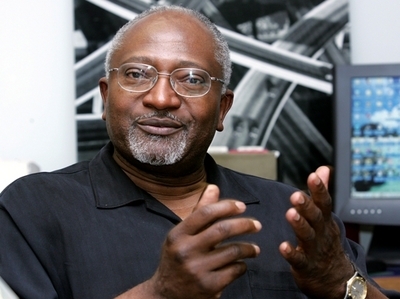On October 4-6, 2012, the University of Michigan is holding a conference, Honoring the Career of Bunyan Bryant: The Legacy and the Future of Environmental Justice, that pays tribute to Professor Bryant for his 40 years of service. This tribute to Bunyan Bryant forced me to think about a work relationship and friendship that I have taken for granted for more than two decades. Professor Bryant holds the Arthur F. Thurnau Professorship and has taught and mentored thousands of students over his long and illustrative career at the University of Michigan.
I met Professor Bryant in 1990 at the "Race and the Incidence of Environmental Hazards Conference" held in School of Natural Resources and Environment (SNRE). This historic conference, the brainchild of professors Bryant and Paul Mohai, helped springboard environmental justice as a legitimate academic endeavor. It also launched, Race and the Incidence of Environmental Hazards (edited by Professors Bryant and Mohai), the first edited EJ book to feature a cross-disciplinary collection of scholars, policy analysts and community activists. I could always count on Bunyan to contribute a chapter to one of my book projects. And of course, he expected me to reciprocate. This book arrangement worked out fine.
The 1990 conference birthed the Michigan Coalition, a small group of EJ leaders who arranged face-to-face meetings with the heads of the U.S. Environmental Protection Agency (EPA), White House Council on Environmental Quality (CEQ) and Health and Human Services (HHS) in an attempt to get environmental justice on their radar. Some of the meetings were heated with tempers flaring on all sides. However, we could always count on Professor Bryant's soft-spoken demeanor to keep us grounded and on task.
I recall him displaying this same even-tempered demeanor while serving on the national planning committee for the 1991 First National People of Color Environmental Leadership Summit and the 1994 EPA National Environmental Justice Advisory Council (NEJAC), where ideological conflicts surfaced at nearly every meeting. Bunyan helped plan the 1994 National Institute for Environmental Health Sciences (NIEHS) "Health and Research Needs to Ensure Environmental Justice" in Arlington, VA. During the second day of this conference on February 11, 1994, President Bill Clinton signed the historic Environmental Justice Executive Order 12898.
I always looked forward to Bunyan's invitation to the Dr. Martin Luther King, Jr. Day Celebration in January at Michigan--even though the event was held in the dead of winter. Leading up to this annual event, a consensus of opinion emerged among conference participants over the years that we are doing it "for Dr. King and Dr. Bryant."
In 2008, Professor Bryant was honored with the William G. Milliken Distinguished Service Award from the Michigan Environmental Council (MEC), for his lifetime of teaching, scholarship and service. Finally, kudos to Professor Bryant for starting the Environmental Justice Initiative (EJI) in the SNRE at Michigan, the only university in the United States that offers an M.A. and Ph.D. in environmental justice. And because of his longevity in the academy, the goal of building an intergenerational movement is much further along. Brother Bunyan, environmental justice leaders and emerging leaders salute you!





